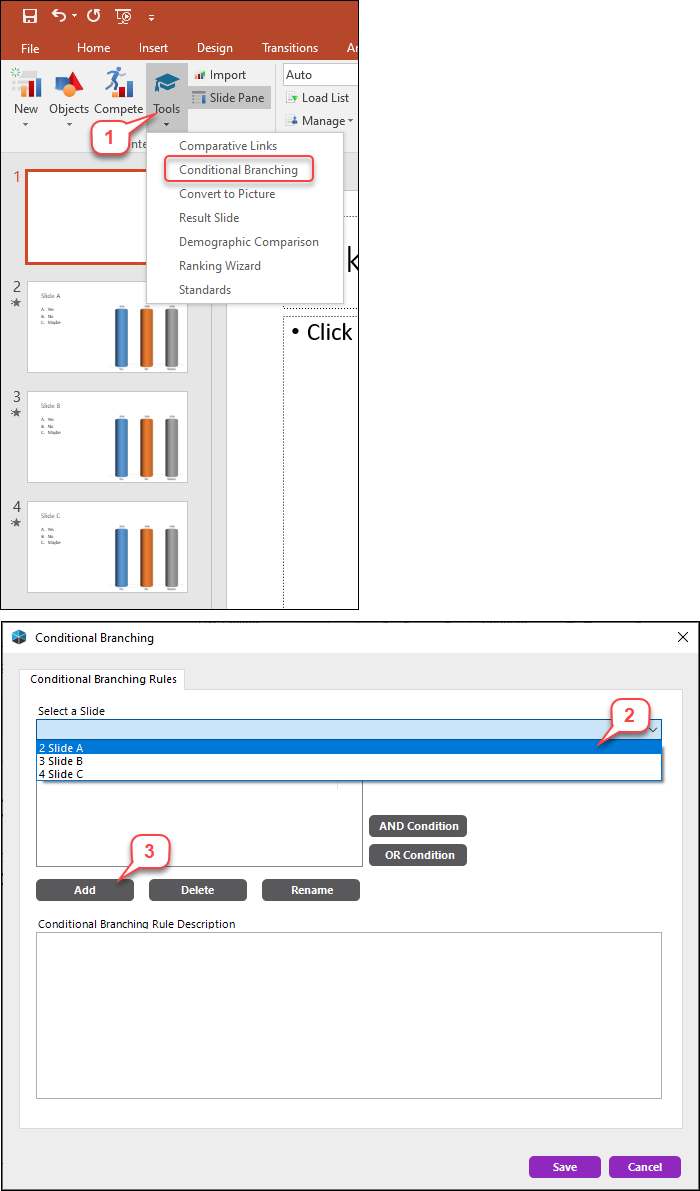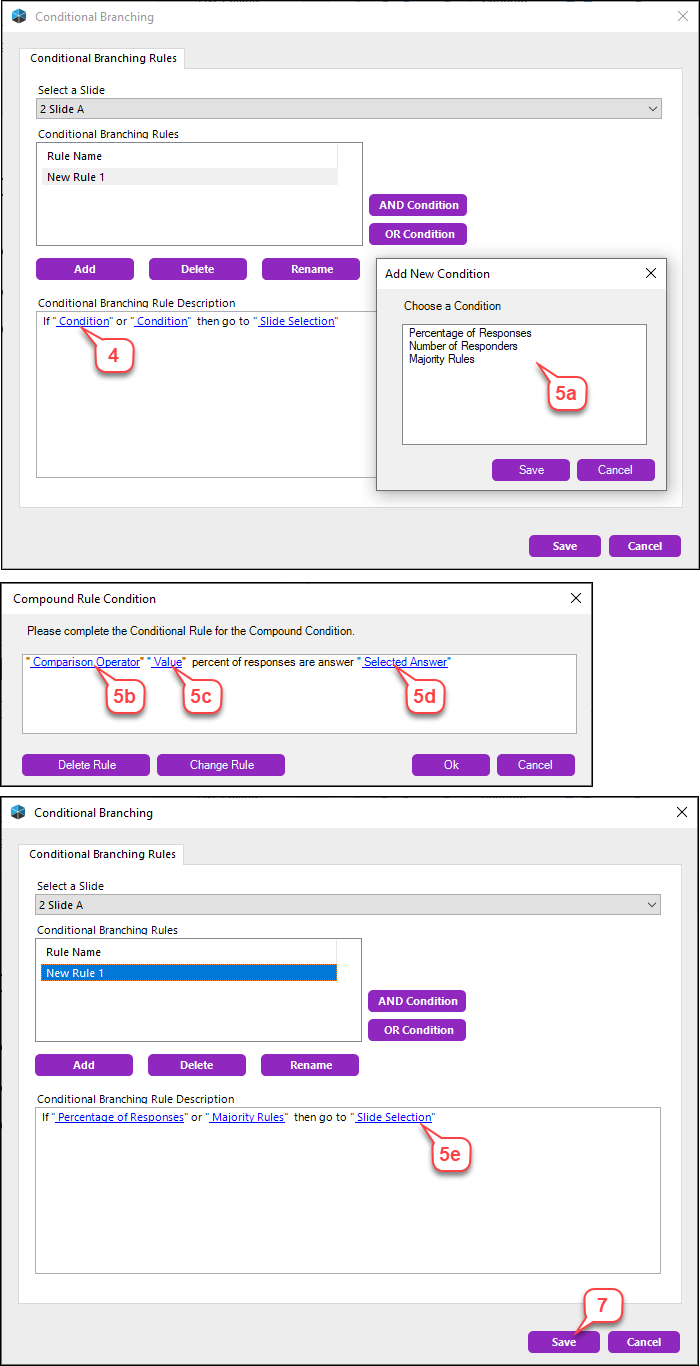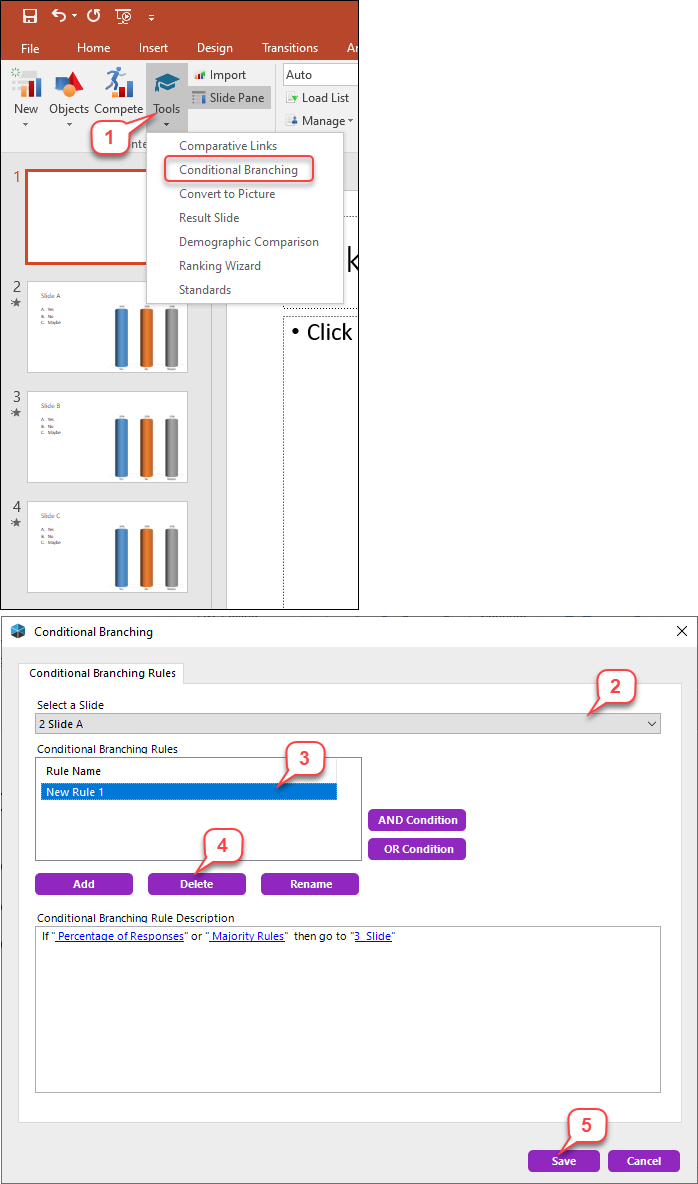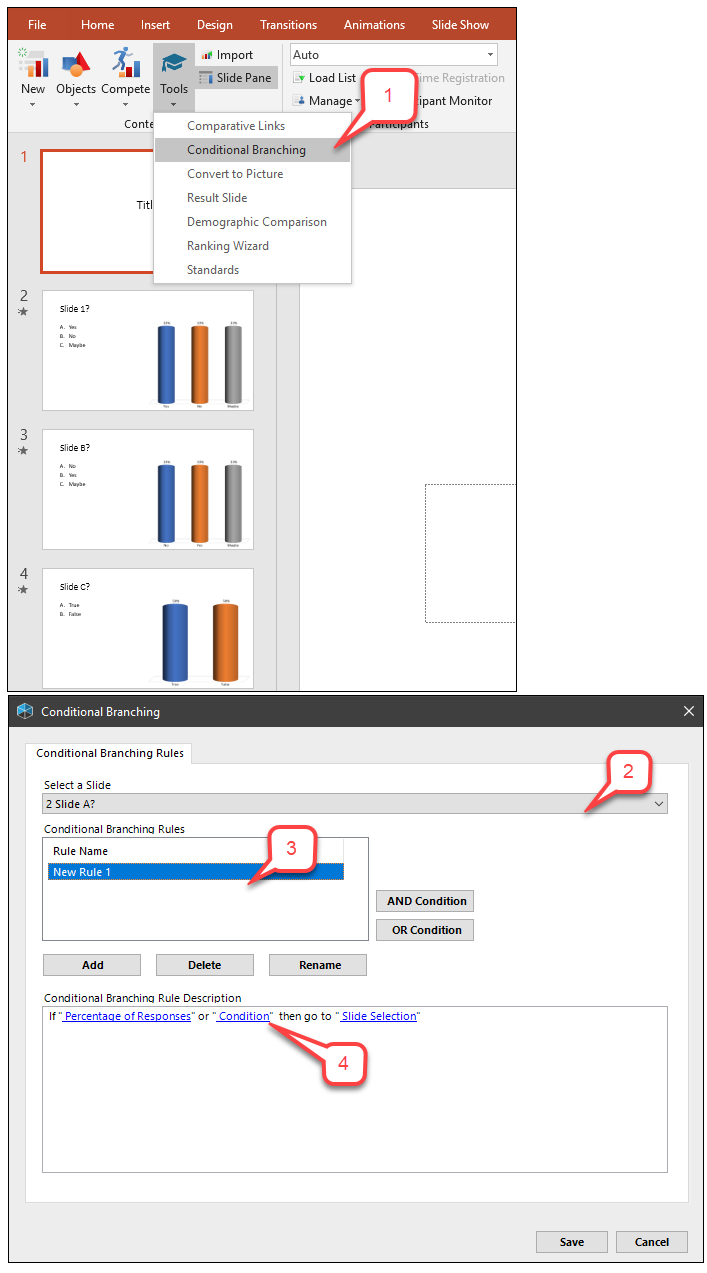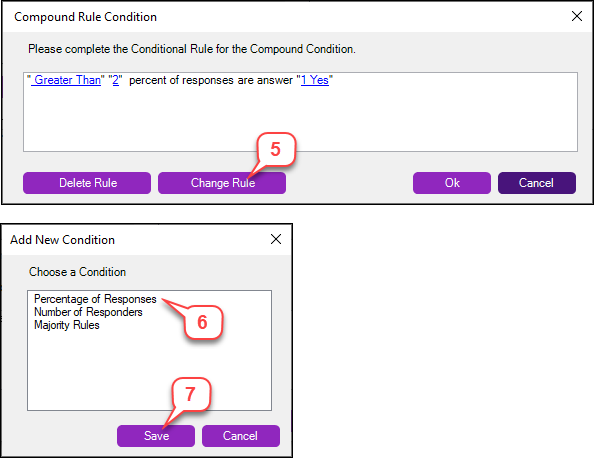- /
- /
- /
How to Add Conditional Branching to PowerPoint Polling
Conditional branching allows you to control the order of slides in the presentation based on responses received from participants. Conditional branching is set up by defining a condition which, if satisfied, advances to a specified slide.
Note: You need to create polling questions before applying conditional branching.
Part I: Adding Conditional Branching
- Click Tools on the “PointSolutions” ribbon and select Conditional Branching.
- Select the slide where the branch will begin from the Select a Slide drop-down menu.
- Click Add to add a rule.
Note: Click Rename to change the default name of the rule. Enter a name in the box provided and click OK.
- Select condition.
Note: Optionally, create additional conditions for a slide by clicking AND Condition or OR Condition as logical operators. There can be up to 30 conditions per selected slide.
TIP:
- Click AND Condition to link a conditional branching item to the previous item to specify that both conditions should be met. If “Condition” and “Condition” then go to “Slide Selection.”
- Click OR Condition to link a conditional branching item to the previous item to specify that either condition can be met. If “Condition” or “Condition” then go to “Slide Selection.”
- Define all conditions in the Conditional Branching Rule Description box by selecting the appropriate link.
5a. Condition – Choose Percentage of Responses, Number of Responders or Majority Rules. The Compound Rule Condition box opens and displays up to three components of the compound rule that must be selected.
5b. Comparison Operator– Choose an operator to satisfy the condition. The choices are Greater Than, Less Than, Equal To, Not Equal To, Greater Than or Equal To, or Less Than or Equal To.
5c. Value– Determines the value or percentage to compare to in the next step. For Number of Responders, enter a number of responses (from 0 to the total number of participants). If Percentage of Responses was chosen, enter a percentage of responses (from 1 to 100.)
5d. Selected Answer– Determines what answer must be selected to make the condition The number or percentage of responses for the selected answer will be used in the comparison. Any of the answer choices on the slide may be chosen. The condition uses the number of responses for that selected answer choice.
5e. Slide Selection– Select the slide to be displayed when the condition is fulfilled. Select any slide in the presentation.
Note: You must press “Ok” after steps 5a-5d to return to the Conditioning Branching Rule Description window where Slide Selection is located.
- Repeat steps 3 – 5 to add additional independent conditions to the same slide.
- Click Save in the Conditional Branching window when all conditions have been added to the slides.
Part II: Deleting Conditional Branching Rules
- Click Tools on the “PointSolutions” ribbon and select Conditional Branching.
- Select the slide where the branch will begin from the Select a Slide drop-down menu.
- Select the rule that you want to delete.
- Press Delete.
- Click Save.
Part III: Modifying Conditional Branching Rules
- Click Tools on the “PointSolutions” ribbon and select Conditional Branching.
- Select the slide where the branch will begin from the Select a Slide drop-down menu.
- Select the rule that you want to modify.
- Select the condition(s) that you want to modify.
- Select Change Rule.
- Define the new condition(s) by selecting the appropriate link.
- Press Save.

